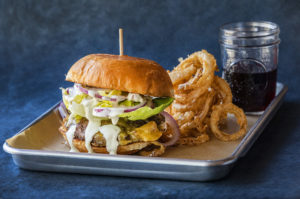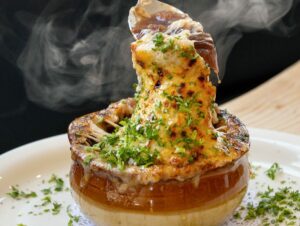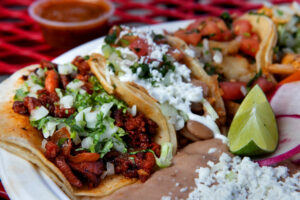
Despite my Irish(ish) heritage, the annual St. Patrick’s Day corned beef adventure is one that I have, so far, avoided at all costs. Like a lot of other folks, wearing green, imbibing in stout beer and Irish coffee is about as Mac-involved as I really care to be. The Irish, let’s face it, aren’t usually known for their culinary prowess and if we’re being honest here, boiling meat within an inch of its life is not my idea of good eats.
Quaint and authentic yes. Delish? Not usually. Just pass the scones and oatmeal and we’ll call it good.
But here’s the thing: Corned beef is a uniquely American food steeped in history (along with pickling spices, but more on that later). It’s the culinary match that could only be made in New York, the lovechild of Jewish immigrants’ plentiful kosher beef brisket and Irish immigrants’ love of salty, boiled meats. Throw in a little cabbage, some pickling spices and potatoes and what we think of as Boiled Dinner (or Corned Beef and Cabbage) was born. In fact, so American was this invention that Abraham Lincoln served it as his inauguration and millions still consume it as a right of spring.*
So, how to do it right?
The important issue is getting a good cut of meat — one that’s minimally processed and ideally hasn’t been dunked in too many odd chemicals, among them, sodium nitrate (also known as saltpeter). Most pre-packaged corned beef includes this controversial preservative (as do many other preserved meats like salami, hot dogs, etc.) that some say can lead to cancer in large amounts. I wouldn’t get too concerned about a single serving of corned beef once a year, but better butchers do it without the stuff — notably Pacific Market. What you’re paying for is the quality of meat and the handling. I tend to lean toward a small cut of the good stuff. It also makes for a less intensely salty piece of meat.
Typically, corned beef is brisket, a cut of beef from the chest area that does well with long-cooking times. It can also be from the “round” of beef, which is closer to the hind end and tends to be leaner and hold together better.
The “corning” in corned beef has nothing to do with corn, but with the style of preserving the meat. Originally the beef was treated with “corns” of salt, though today most start with a salt brine then add a pickling mixture that includes herbs like cinnamon, mustard seed, bay leaves, allspice, dill seed, cloves, ginger, peppercorns, coriander, juniper berries, mace, or cardamom.
The most traditional way to cook corned beef is to boil it for three or so hours in water. It keeps the meat moist and tender, but doesn’t infuse a ton of flavor into the meat. Slow cookers are also popular, and in one recipe I tested, you can get a different flavor from using apple juice or beer rather than water to cook the meat. Least traditional is braising, or long-cooking the meat in the oven, which can dry out the meat.
Here are some recipes BiteClub tried…
The meats:
– Pacific market house corned beef ($4.99 pound)
– Olivers’ Harris Ranch corned beef (2.99 pound)
– Safeway: Shenson Corned Beef ($2.99 pound)
– Whole Foods corned beef round ($4.99 pound)
The results:
– The boiled meats were clearly the most juicy and tender, with the Pacific Market corned beef taking the prize for taste and color — bright red inside. I recommend this method as the most fool-proof. The slow-cooked cornbeef in vinegar, using the round was tough and dry. The braised corned beef, though it perfumed the house and promised to be amazing, was a rubbery disaster that was inedible. I blame the cook.
++++++++
What makes corned beef different from pastrami? It’s the smoke. Pastrami is just corned beef that’s taken a trip through the smoker.
* A little history lesson: A boiled bacon joint was more traditional fare for the Irish, but less easy to find in 1800’s New York. So those clever Irish immigrants used what was available — beef brisket — instead.
And don’t forget the sauce! What saves a ho-hum corned beef dinner from disaster is a good sauce. Stir horseradish into sour cream for a creamy horseradish sauce or try this adapted recipe for mustard sauce.
Mustard Cream Sauce
1½ tablespoons butter
½ cup brown sugar firmly packed
¼ cup prepared mustard
? teaspoon pepper
1 egg
¼ cup granulated sugar
¼ teaspoon salt
¾ cup cider vinegar
1/4 cup heavy cream
Melt butter in small saucepan. Remove from heat, set aside to cool. In small bowl, with rotary beater, beat egg, sugars, mustard, salt, and pepper untill well combined. Beat in vinegar, stir mixture into cooled butter, mix well. Over medium heat, bring to boiling, stirring. Reduce heat; simmer 3 minutes. Serve hot.









